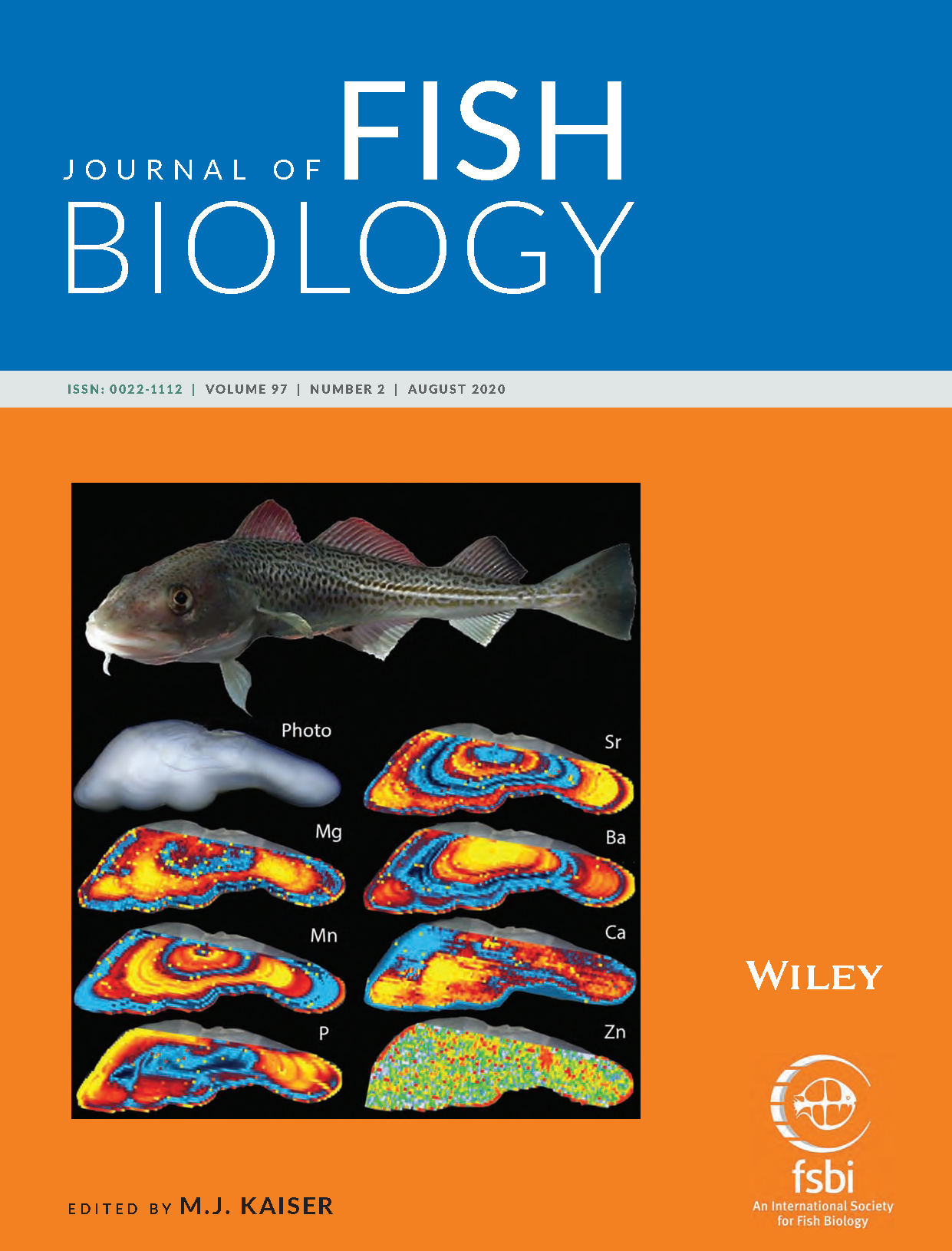Recent Headlines

The art on the cover of this issue of journal of fish biology was designed by Yvette Heimbrand
Otolith Research Makes Cover of Journal of Fish Biology
Research by Dr. Karin Limburg and her graduate student from the Swedish University of Agricultural Sciences (SLU) made the front cover of the Journal of Fish Biology and the editor-in-chief Michel Kaiser featured their article in his "Between the Journal Covers" editorial.
The article is part of SLU student Yvette Heimbrand's dissertation. The article describes using otolith chemistry as an aid to aging difficult-to-age fish, such as the Baltic Sea cod. The cover art shows an emaciated cod at the top of the figure. Then there are a series of images: the optical photo of an otolith (top left), along with corresponding "maps" of calcium and a number of trace elements, showing how the concentrations vary throughout the otolith.
"In the study, we conducted an age-determination experiment where we had six people who age fish for a living by visual examination of otoliths and three of us who used our new chemical aging technique," said Limburg.
"Despite the fact that the latter are experts and have cross-training workshops, and we "chemo-agers" never got together and formally trained, our "chemo-aging" method provided better agreement."
For the otolith on the cover, the visual-method agers came up with estimates from Age 2 to Age 6, and the "chemo-agers" came up with a firm Age 2.
"Look at the manganese map," said Limburg. "It's very clear! Two blue bands. This map shows us the seasonal pattern of hypoxia experienced by this poorly growing fish. The blue bands are winters without hypoxia, and the red-orange-yellow are the result of more intense hypoxia during the summer and fall."
Limburg is a visiting professor in the Department of Aquatic Resources at the Swedish University of Agricultural Sciences, Sweden.